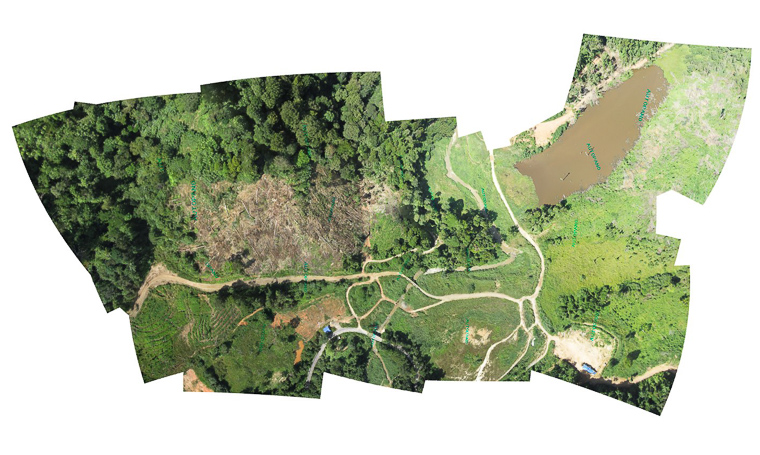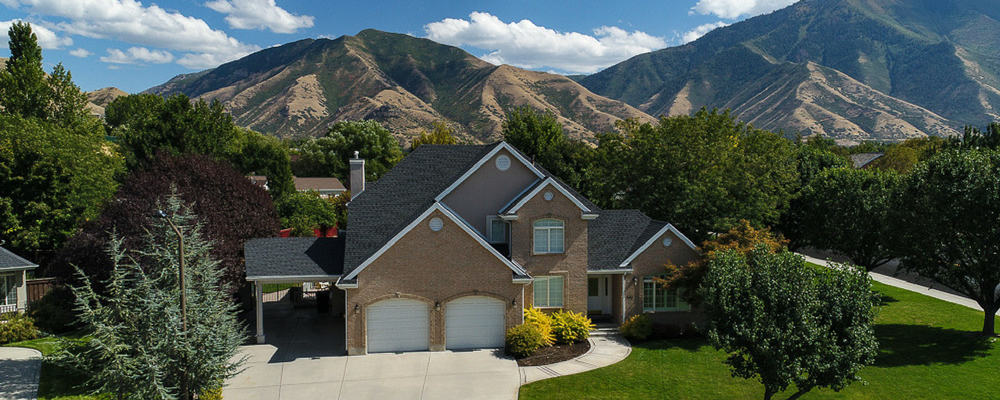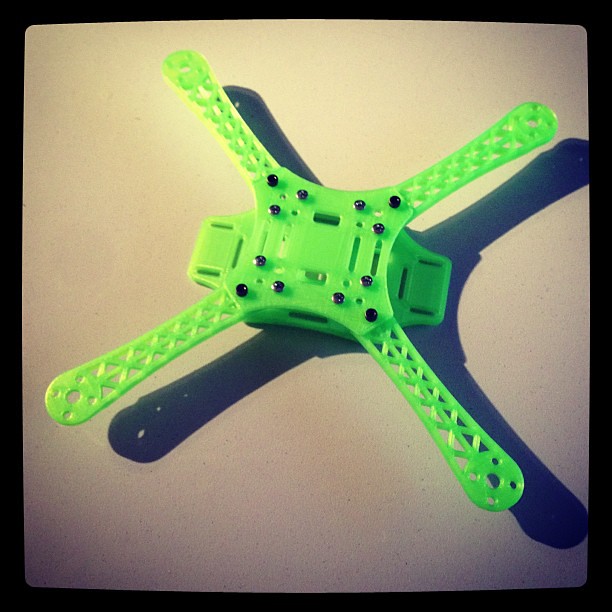
Although the United States, Russia, as well as other countries, want to use modern aircraft more often, Ukraine lacks the resources necessary to train its troops on these aircraft. While Ukrainians are able to receive training on aircraft and other vehicles in Western nations like Germany, they can't get the same training for drones in Ukraine. Because Ukrainians have grown up using older equipment, such as trucks, drones are easier for them. Drones are also easy to use for soldiers because they don't need "pilots". Drones are also easy to use, similar to those in video games.
Aerorozvidka
To combat ISIS in Eastern Ukraine, the Ukrainian military has a unique strategy: octocopters with thermal cameras are used for nighttime missions. Some drones can be fitted with antitank weapons and can even light up columns. These drones are highly maneuverable, and can carry as much 11 lbs payload. The drones' small size means they can fly low over targets and drop munitions.
Originally an IT enthusiast group, Aerorozvidka has become a military air reconnaissance unit. Aerorozvidka began as a civilian drone company. However, the organization grew to become a fully fledged unit with its own head. Due to export restrictions, the Ukrainian government prohibited Russian military aircraft entry into Ukraine. Aerorozvidka relies heavily on crowdfunding and donations for its continued existence, since many of the components used in drones are made in America.
Switchblade
The U.S. military has supplied Ukraine with armed "Switchblade," drones capable of striking Russian tanks from faraway. This unmanned aerial vehicle was developed by the US Air Force to meet Ukrainian requirements. John Kirby, a Pentagon spokesperson said that more than 121 of the machines have been sent to Ukraine. It is unclear how the Switchblades will work in the conflict between Ukraine and Russia.

The Switchblade small drone can be launched easily from a tube. It is capable of traveling 40 kilometers. The Switchblade has a range of 40 kilometers and can hit Russian convoys up to 6 miles, unlike Bayraktar. In a conflict like Ukraine, these small aircraft can be set up in minutes. The Switchblade can fly much faster than the Bayraktar (current U.S. ally).
Russian kamikaze drones
Recently, the US announced a $800 million military aid package to Ukraine. One of those packages includes the delivery of 121 unmanned planes, known as "Phoenix Ghosts," that are designed to terrorize Russian troops. These unmanned aircraft can fly for 30 to 40 minutes over large areas and are equipped with cameras and warheads. Switchblade, a hovering munition of 5.5 pounds that can kill tanks and armored cars, is an example.
These lightweight aircrafts are small and light, and can operate from any location, whether it is land, air or sea. Any advantage an opponent has over their counterpart in an aerial battle like this is vital. Russian kamikaze aircrafts pose a threat to that advantage. This capability will be crucial to Ukraine's army, as it can break Russian sieges or attack command-and control nodes. These capabilities would be a huge liability for both the sides but a small drone could prove to be an asset on the battlefield. Ukraine may emerge victorious.
U.S. drones left to loiter
Russia is now integrating ZALA KYB lotering munitions in its military arsenal. These drones can be used in the same way as bazookas to carry out lethal loitering operations. These autonomous killing machines may be more common in black markets if loitering drones are used. But observers and pundits are worried about this. What can the U.S. do?

Kirby claims that the U.S. government sent more than 121 Switchblade loitering helicopters to Ukraine in order to aid Kiev against Russian forces. The Switchblade drone is 5.5 pounds and can hover over an area for thirty to forty minutes. It comes with a camera as well as a small warhead. Its mission is to shoot down the opposition forces in Ukraine.
FAQ
How do I keep drones away from my house?
Drones are becoming more common for home surveillance. However they can also be a threat to privacy or security. If you want to avoid drone attacks, you should install motion sensors around your property and use them to detect any unauthorized flying objects.
What is the law about drones flying on private property?
The FAA has recently issued new rules for commercial drone flights. These rules are only applicable to UAVs that weigh less than 55 pounds and fly below 400 feet above ground. Commercial operators must register with FAA to receive a license. They also need permission from local authorities when operating near airports or other restricted areas.
Can my drone be flown indoors?
Yes, you can fly your drone indoors. Your home should be free from obstacles and hazards. Avoid flying near windows, doors and heating vents.
Which US states allow drones?
Legally, you can operate a drone to perform hobby tasks. The Federal Aviation Administration has created guidelines to allow small unmanned aircraft system (UAS) use. These UASs have to be registered with FAA before they are allowed to fly. These UASs can also be flown by commercial operators if they are allowed to fly under certain conditions.
Do I need special training to fly a drone?
No, you don’t need any special training in order to fly your drone. All you need is a remote control unit and some basic knowledge of flight mechanics.
Is the FAA able to regulate drones?
The FAA supervises all aspects related to drone operations, including certification requirements and safety standards.
Can I fly my drone around my area?
Yes! These are known as UAVs (unmanned air vehicles). There are many options for drones, from small quadcopters to larger fixed-wing aircraft. The FAA has recently issued new rules regarding the commercial use of UAVs, which means you can now legally fly them for business purposes. Be aware that UAVs operating near airports could cause interference to air traffic control systems. You must get permission from the authorities before you can fly one.
Statistics
- Research and Markets predict a growth rate of 51.1% over the next five years. (thedroneu.com)
- With the top 10% making over $100/h and the bottom 10% making as low as $10/h. (dronesgator.com)
- According to Indeed, a drone pilot gets paid $25.73 per hour on average in the US. (dronesgator.com)
External Links
How To
How to Fly Drones With Beginners
A drone is a remotely-controlled aircraft that is used for aerial photography and surveillance. The technology behind drones has been around since World War II. DJI's Phantom series quadcopters were first commercially available in 2010. There have been many drones made since then. These range from beginner-friendly drones like Parrot AR Drone 2.0 to more advanced multi-rotor craft like DJI Mavic Pro.
There are several ways to fly a drone, including;
-
Remote control - This method uses a control device attached to your hand, which enables you to steer the drone through its flight path. There are two main types for controllers: Joysticks or On/Off switches, which can be used to control the drone's flight path.
-
Manual Control - This method uses a smartphone app to remotely control the drone using GPS coordinates. You will need to keep track of where the drone is going and follow the directions from the app.
-
Autonomous Flight – This is when the drone handles all the piloting tasks. It is basically flying autonomously and without human intervention. For the autonomous flight to occur, the drone must have a built-in camera and sensors capable of capturing images and data.
-
Triggered Flight: This is similar in concept to manual control. The pilot manually creates a route and the drone then follows it until it reaches that endpoint. After the preprogrammed route is complete, the drone will automatically land and return to its base.
-
Landing Gear: Some drones have landing gear that allows them safely to land in case they lose power or run low on battery.
-
Goggles - Some pilots wear goggles to protect themselves from debris while operating.
-
Camera - Some drones can be equipped with cameras which enable you to capture photos from the sky.
-
Obstacles. Some drones can have obstacle avoidance technology that stops them from hitting obstacles.
-
Speed - Some drones can reach speeds of over 40 mph.
-
Battery Life - Most drones are capable of lasting between 20 minutes and three hours, depending on the power that you use.
-
Range - Some drones can travel upto 30 miles depending on their models.
-
Power source: Some drones will require an external power source while others can be powered by internal batteries.
-
Weight – Some drones are less than one pound, while other models can be up to four pounds.
-
Size - Drones range from small devices that fit in one's palm to large crafts that weigh more than 50 pounds.
-
Price - From high-end models that cost thousands of dollars to low-cost options that start at $100, all drones fall under a certain price category.